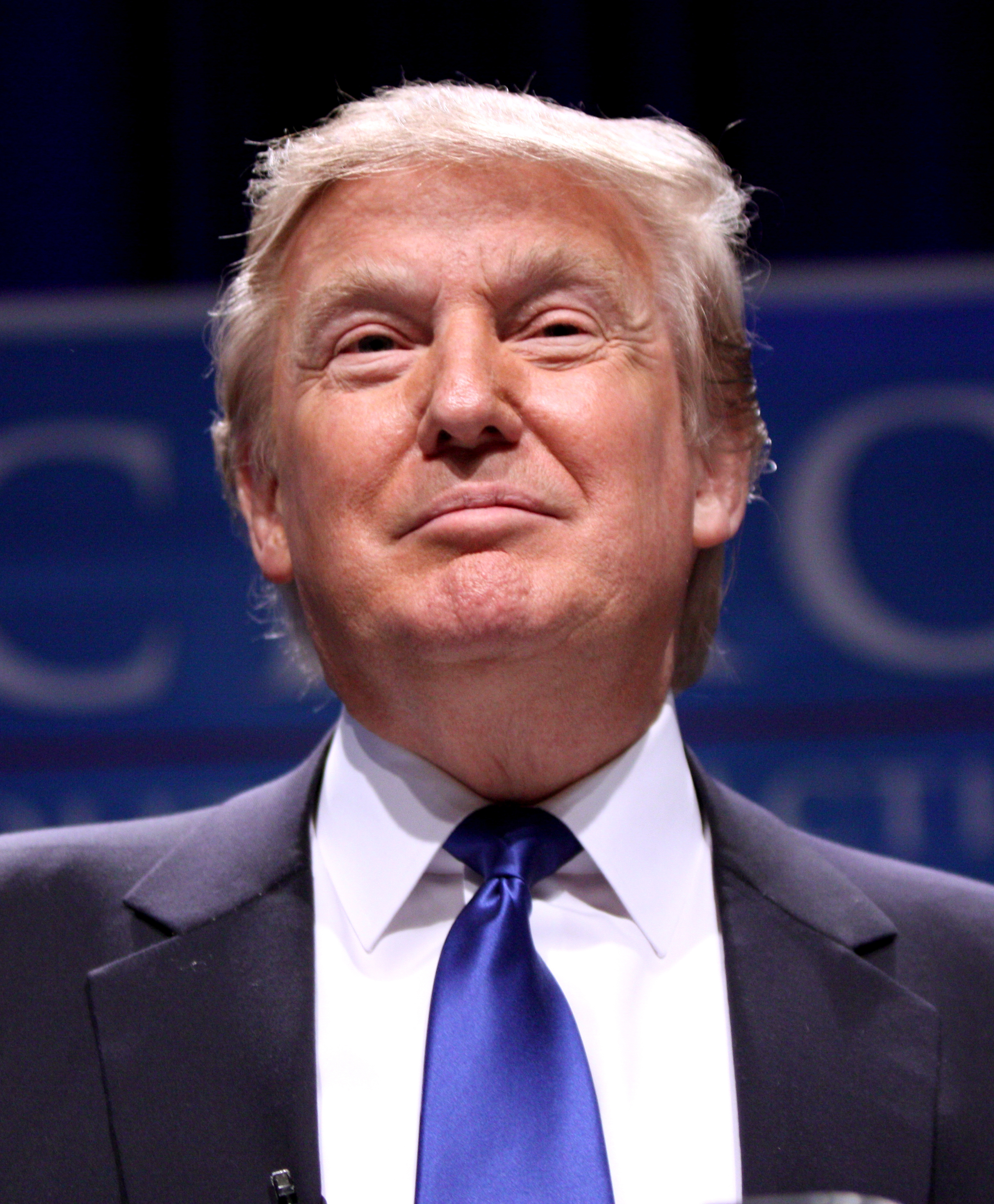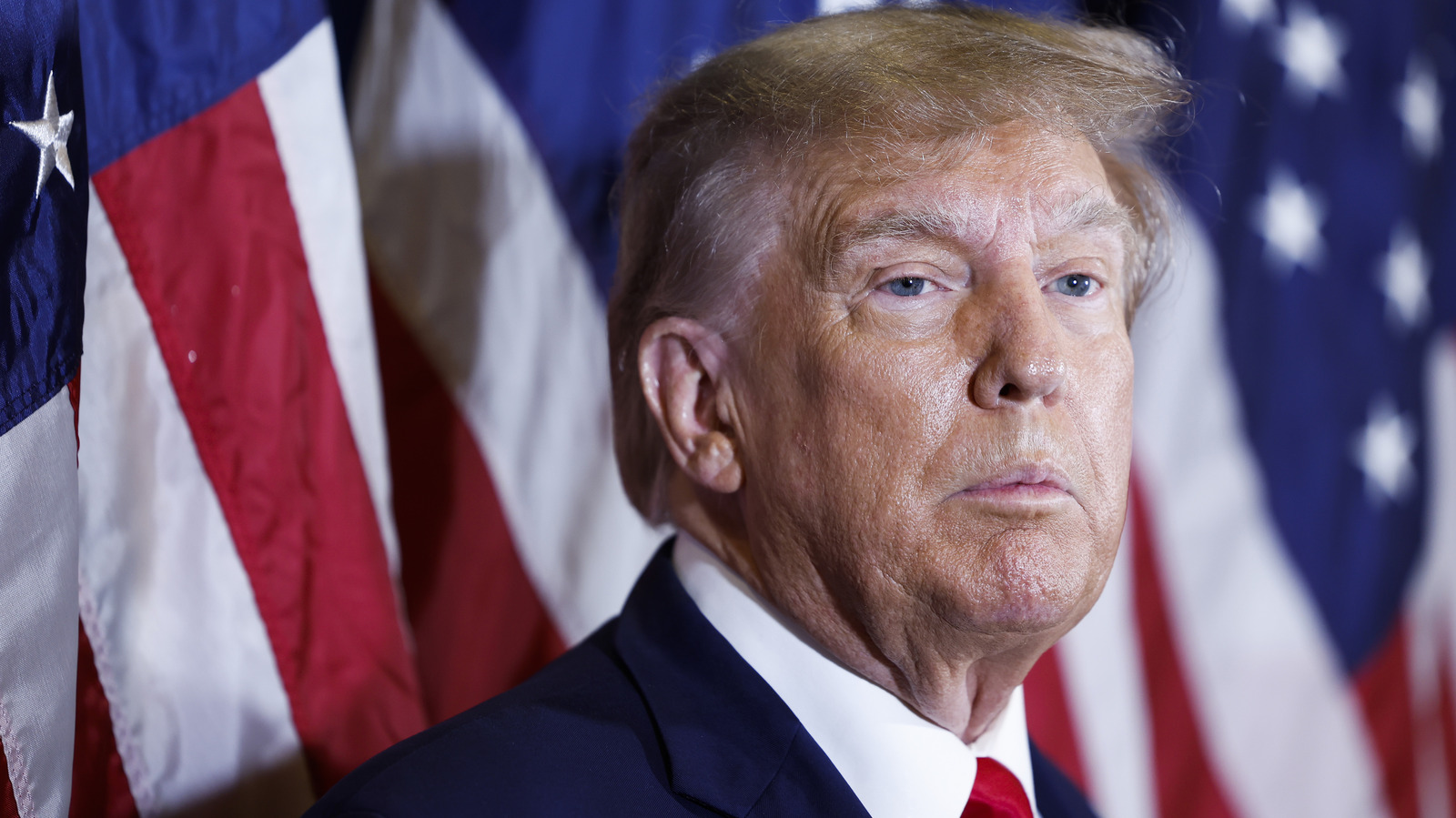Donald Trump And Iran: Unpacking A Volatile Foreign Policy Stance
The relationship between the United States and Iran has long been fraught with tension, but under the presidency of Donald Trump, this complex dynamic reached unprecedented levels of volatility and direct confrontation. From the moment he took office, Trump made it clear that his approach to Tehran would be a radical departure from his predecessors, signaling a new era for Donald Trump and Iran relations.
This article delves into the intricacies of Trump's foreign policy towards the Islamic Republic, examining his key decisions, the rationale behind them, and the significant impact they had on regional stability and global diplomacy. We will explore the "maximum pressure" campaign, the dramatic withdrawal from the nuclear deal, and the constant brinkmanship that defined this critical period, providing a comprehensive overview of a foreign policy chapter that continues to resonate today.
Table of Contents
- Understanding Trump's Iran Doctrine
- The JCPOA Withdrawal: A Defining Moment
- Maximum Pressure Campaign Unleashed
- Rhetoric and Escalation: A War of Words
- Military Brinkmanship and the Threat of Force
- The Paradox of Negotiation Amidst Threats
- Key Incidents and Direct Confrontations
- International Reactions and Diplomatic Efforts
- The Legacy of Trump's Iran Policy
- Conclusion
Understanding Trump's Iran Doctrine
Donald Trump's approach to foreign policy, particularly concerning Iran, was characterized by a distinct "America First" philosophy and a deep skepticism towards multilateral agreements. He often expressed a preference for direct, bilateral negotiations and a willingness to challenge established norms. When it came to Iran, this translated into a belief that the previous administration's nuclear deal, the Joint Comprehensive Plan of Action (JCPOA), was fundamentally flawed and did not adequately address Iran's broader destabilizing activities in the Middle East or its ballistic missile program. Trump's core conviction, a pledge he reiterated both in office and on the campaign trail, was that "Iran cannot be allowed to have a nuclear weapon." This unwavering stance formed the bedrock of his administration's strategy, aiming to compel Tehran to renegotiate a more comprehensive deal or, failing that, to significantly curtail its regional influence through economic pressure. His view was that the JCPOA merely delayed Iran's nuclear ambitions rather than permanently preventing them, and that a tougher, more confrontational posture was necessary to protect U.S. interests and those of its allies in the region, particularly Israel. This perspective informed every major decision regarding Donald Trump and Iran.
- Aitana Bonmati Fidanzata
- Preetyscale
- Jess Brolin
- How Tall Is Al Pacino In Feet
- How Did Bloodhound Lil Jeff Die
The JCPOA Withdrawal: A Defining Moment
One of the most significant foreign policy actions during Donald Trump's first term as president was his decision to withdraw the U.S. from the nuclear accord, known as the JCPOA. This move, announced two years after the deal went into effect, sent shockwaves through the international community and fundamentally reshaped the dynamics between the U.S. and Iran. The JCPOA, signed in 2015 by Iran and the P5+1 (China, France, Germany, Russia, the United Kingdom, and the United States), had offered Iran sanctions relief in exchange for verifiable limits on its nuclear program. Proponents argued it was the best way to prevent Iran from developing nuclear weapons, while critics, including Trump, maintained it was too lenient and temporary.
The Rationale Behind the Pullout
President Trump consistently argued that the JCPOA was a "terrible deal" that did not go far enough in preventing Iran from acquiring nuclear weapons. His administration contended that the agreement's sunset clauses would eventually allow Iran to resume its nuclear activities and that it failed to address Iran's ballistic missile program or its support for proxy groups across the Middle East. By withdrawing, Trump aimed to exert "maximum pressure" on Tehran, forcing it to negotiate a new, more comprehensive agreement that would permanently dismantle its nuclear program and curb its regional behavior. This decision was a clear manifestation of his "never wavered" stance that Iran should not be allowed to possess nuclear weapons, pushing the relationship between Donald Trump and Iran into uncharted territory.
Maximum Pressure Campaign Unleashed
Following the withdrawal from the JCPOA, the Trump administration swiftly initiated what it termed a "maximum pressure" campaign against Iran. This strategy was designed to cripple Iran's economy through stringent sanctions, thereby compelling its leadership to either capitulate to U.S. demands for a new deal or face internal unrest. Trump signed a national security presidential memorandum (NSPM) restoring maximum pressure on the government of the Islamic Republic, systematically reimposing and expanding sanctions that had been lifted under the nuclear deal, alongside new ones targeting various sectors of Iran's economy and key figures within its government and military.
Economic Sanctions and Their Impact
The sanctions targeted Iran's vital oil exports, its financial sector, shipping, and other industries. The goal was to cut off Iran's revenue streams, making it exceedingly difficult for the regime to fund its regional activities, including support for groups like Hezbollah and Houthi rebels. The administration also threatened secondary sanctions against any entities or countries that continued to do business with Iran, effectively pressuring international companies to cease their operations there. While the campaign undeniably inflicted severe economic pain on Iran, leading to a significant depreciation of its currency and rising inflation, it also prompted Iran to gradually scale back its commitments under the JCPOA, restarting some nuclear activities in protest. The effectiveness of the maximum pressure campaign in achieving a new deal remained a contentious point, as Iran largely resisted U.S. demands for "unconditional surrender," further intensifying the complex dynamic between Donald Trump and Iran.
Rhetoric and Escalation: A War of Words
Beyond policy decisions, the relationship between Donald Trump and Iran was frequently defined by a heated war of words, with President Trump often employing strong, confrontational rhetoric. His public statements and social media posts frequently contained stark warnings and direct threats aimed at Tehran, reflecting a deliberate strategy to project strength and deter perceived Iranian aggression. This rhetorical approach often ratcheted up tensions, keeping the world on edge about potential military escalation.
"Unconditional Surrender" and Stark Warnings
President Donald Trump issued a stark warning to Iran, urging the country to accept a nuclear deal to avoid further "planned attacks," citing that "there has already been great death and" destruction. He also demanded "unconditional surrender" in a series of escalating threats, a demand that Iran's supreme leader, Ayatollah Ali Khamenei, dismissed as "threatening and ridiculous" in a statement read out on state television. Trump's threats reached a peak when he warned Iran of "bombing the likes of which they have never seen before" if the Islamic Republic didn’t reach a new deal on its nuclear program. This aggressive language was part of a broader strategy to intimidate Iran into compliance, emphasizing the full strength and might of America's military that could be used. He also specifically warned Tehran "not to touch our troops" amidst rising regional tensions, underscoring the immediate danger of miscalculation.
Military Brinkmanship and the Threat of Force
The rhetoric of the Trump administration was often backed by the implicit or explicit threat of military action, creating periods of intense military brinkmanship. While direct conflict was largely avoided, there were several instances where the U.S. appeared to be on the verge of launching strikes against Iranian targets, particularly its nuclear facilities. This constant tension kept global observers on high alert, analyzing every statement and troop movement for signs of imminent confrontation.
Approving Operational Attack Plans
Reports indicated that President Donald Trump had "inched closer to ordering military strikes on Iran's nuclear facilities, approving operational attack plans while stopping short of authorizing an attack." This revelation highlighted the seriousness with which the administration considered military options. On one occasion, President Trump announced that he could take up to two weeks to decide whether to send the U.S. military to Iran, a period of time that opened a host of new options. The White House later confirmed that President Donald Trump would decide within the next two weeks whether to strike Iran, adding that Trump still saw a "substantial" chance that negotiations could achieve a breakthrough. The "big decision for Trump may be whether to use America’s B." bombers, suggesting the consideration of significant military assets. These deliberations, often conducted in the Situation Room with advisers, as confirmed by a White House official, underscored the administration's willingness to use force if diplomacy failed. Trump also asserted, "we now have complete and total control of the skies over Iran," a statement intended to project overwhelming military superiority and deter any aggressive moves by Tehran.
The Paradox of Negotiation Amidst Threats
Despite the aggressive rhetoric and the "maximum pressure" campaign, there was a persistent, albeit often contradictory, undercurrent of willingness to negotiate with Iran. This created a paradoxical situation where the Trump administration simultaneously issued dire threats and expressed openness to diplomatic solutions. This duality reflected Trump's characteristic negotiating style: applying immense pressure to force an adversary to the table on his terms.
Reports suggested that "the Trump administration has for weeks been holding meetings with Iran in an effort to reach a nuclear deal with Tehran." This indicates that even while public rhetoric was confrontational, back-channel or indirect diplomatic efforts were being pursued. Trump himself stated that his decision on U.S. involvement would "take two weeks maximum," implying a window for diplomatic resolution. European leaders, including those who remained committed to the JCPOA, also met with Iranian diplomats in Geneva, attempting to reach a diplomatic resolution that would de-escalate tensions and preserve the nuclear accord. This international effort highlighted the global concern over the escalating tensions between Donald Trump and Iran and the desire for a peaceful resolution, even as Trump's administration maintained its hardline stance.
Key Incidents and Direct Confrontations
The period of Donald Trump's presidency was marked by several specific incidents that brought the U.S. and Iran to the brink of direct conflict. These moments served as stark reminders of the volatile nature of their relationship and the potential for rapid escalation. Each incident tested the limits of both sides' resolve and demonstrated the fragility of regional stability.
One particularly alarming exchange occurred when President Donald Trump said that he’d "given his advisers instructions to obliterate Iran if it assassinates him." He chillingly added, "if they did that they would be obliterated," in an exchange with reporters while signing an executive order calling for the U.S. government to impose maximum pressure on Tehran. This extreme threat underscored the personal nature Trump sometimes injected into foreign policy. Later, Donald Trump issued his biggest threat against Iran on Sunday, prompting Tehran to reportedly ready its own missiles against American targets. This came after the US president warned Iran of ‘bombing the likes of which they have never seen before’ if the Islamic Republic doesn’t reach a new deal on its nuclear programme. Furthermore, President Donald Trump threatened Iran's supreme leader as he pushed Tehran to end its retaliatory airstrikes on Israel and warned against any threats to U.S. targets as its conflict with Israel escalates, saying the full strength and might of America's military could be used. These incidents illustrate the high-stakes confrontations that characterized the period of Donald Trump and Iran.
International Reactions and Diplomatic Efforts
The U.S. approach to Iran under Donald Trump often put it at odds with its traditional European allies, who largely sought to preserve the JCPOA and de-escalate tensions through diplomacy. While European leaders expressed concern over Iran's regional behavior, they believed the nuclear deal was a crucial non-proliferation achievement that should be maintained. This divergence in strategy created diplomatic challenges for the U.S. and complicated efforts to present a united front against Iran.
Despite the U.S. withdrawal, European leaders continued to engage with Iranian diplomats, attempting to find a diplomatic resolution that would keep the nuclear deal alive and prevent further escalation. These efforts often involved intricate negotiations aimed at providing Iran with economic incentives to remain compliant with the JCPOA's terms, despite the reimposition of U.S. sanctions. Additionally, regional allies like Israel played a significant role. The Jerusalem Post reported on a phone call between "Trump and Netanyahu on Iran, trying to 'avoid death and destruction'," highlighting the shared concerns and coordinated efforts between the U.S. and Israel regarding the Iranian threat. This interaction underscored the complex web of alliances and diplomatic maneuvers that characterized the international response to the tensions between Donald Trump and Iran.
The Legacy of Trump's Iran Policy
The foreign policy of Donald Trump towards Iran left a complex and contentious legacy. On one hand, proponents argue that the "maximum pressure" campaign significantly weakened Iran's economy and curtailed its ability to fund proxy groups, forcing the regime to contend with severe internal challenges. They might point to the fact that Iran did not acquire a nuclear weapon during Trump's term as evidence of his policy's success in upholding his core pledge that Iran "cannot be allowed to have a nuclear weapon." The policy also arguably signaled a tougher stance against what the administration viewed as a rogue regime, reassuring allies like Israel and Saudi Arabia.
On the other hand, critics contend that the withdrawal from the JCPOA alienated key European allies, weakened the international non-proliferation regime, and ultimately pushed Iran closer to, rather than further from, nuclear breakout capabilities by prompting it to restart some nuclear activities. They argue that the constant brinkmanship and bellicose rhetoric increased the risk of accidental conflict, creating a perpetually unstable environment in the Middle East. The lack of a new, comprehensive deal by the end of his term also meant that the core objective of the maximum pressure campaign — to force Iran into a better agreement — remained unfulfilled. The relationship between Donald Trump and Iran, therefore, ended his presidency in a state of heightened tension, leaving his successor with the daunting task of navigating a deeply fractured and unpredictable dynamic.
Conclusion
The four years of Donald Trump's presidency witnessed a dramatic and often turbulent shift in U.S. policy towards Iran. From the decisive withdrawal from the nuclear accord to the implementation of a sweeping "maximum pressure" campaign and the frequent use of stark, confrontational rhetoric, Trump fundamentally reshaped the diplomatic landscape. His unwavering commitment to preventing Iran from acquiring nuclear weapons, articulated repeatedly, drove an assertive approach that prioritized unilateral pressure over multilateral engagement.
While the strategy inflicted significant economic pain on Iran and kept its nuclear ambitions under scrutiny, it also created periods of intense military brinkmanship and strained relationships with traditional allies. The legacy of Donald Trump and Iran policy remains a subject of intense debate, with arguments focusing on its effectiveness in achieving long-term strategic goals versus the risks it posed to regional stability. As the world continues to grapple with the complexities of Iran's role in global affairs, understanding this pivotal period under President Trump offers crucial insights into the enduring challenges of international diplomacy and conflict resolution. We invite you to share your thoughts on this complex relationship in the comments below, or explore our other articles on foreign policy and international relations.
- Allmoveishub
- 9xsarmy
- Shyna Khatri New Web Series
- Paris Jackson Mother Debbie Rowe
- Jonathan Roumie Partner

File:Donald Trump by Gage Skidmore.jpg - Wikipedia, the free encyclopedia

Donald Duck PNG

Donald Trump Makes History As First President To Be Arrested After